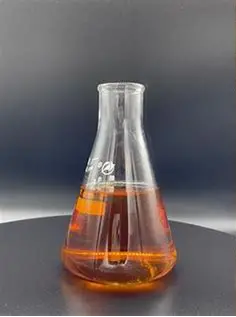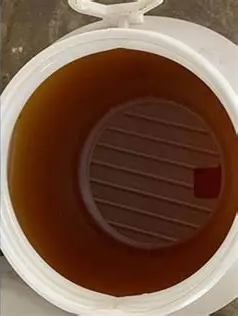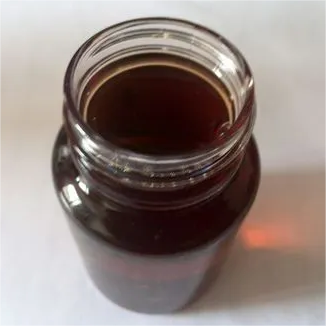1. Introduction
Sodium lauryl sulfate (SLS), also known as sodium dodecyl sulfate or natrium lauryl sulfate, is a widely used anionic surfactant found in shampoos, toothpastes, soaps, and even herbicide formulations. While effective at creating lather and removing oils, SLS can cause skin irritation, dryness, or allergic reactions in sensitive individuals. Many consumers now seek gentler alternatives without compromising cleaning power.

This guide offers a practical, step-by-step approach to identifying SLS in products, understanding its chemical relatives, and replacing it with safer, milder surfactants—whether you’re formulating your own products or simply reading labels at the store.
2. How to Identify Sodium Lauryl Sulfate on Labels
SLS appears under many names due to regional spelling differences and marketing terms. Look for these variations on ingredient lists:
- sodium lauryl sulfate
- sls sodium lauryl sulfate
- na lauryl sulfate
- sodium dodecyl sulfate
- lauryl sulfate
- sls sulfate
Be cautious of similar-sounding ingredients like sodium laureth sulfate (also called sodium lauryl ether sulfate or sodium lauryl ether sulphate), which is ethoxylated and generally milder but still an anionic surfactant. Note that ‘sls sodium laureth sulfate’ is a mislabeling—SLS and SLES are distinct compounds.
3. Why Replace Sodium Lauryl Sulfate?
SLS is a strong anionic surfactant that effectively lowers surface tension and lifts dirt, but it can strip natural oils from skin and hair. For those with eczema, rosacea, or sensitive scalps, alternatives are often recommended.
Additionally, in agricultural applications—such as surfactant for herbicides or lawn wetting agents—SLS may be too harsh for delicate plants or soil microbiomes. Gentler non-ionic or bio surfactants like polysorbate 80, decyl glucoside, or lignin sulfonate are often preferred.
4. Step-by-Step Guide to Replacing SLS in DIY Formulations
If you’re making your own shampoo, body wash, or cleaning spray, follow these steps to substitute SLS safely:

4.1 Choose a Primary Mild Surfactant
Replace SLS with one of these gentle anionic or amphoteric surfactants:
- sodium cocoyl isethionate (a coconut-derived, low-irritant cleanser)
- sodium lauroyl sarcosinate (often used in toothpaste for foam without harshness)
- sodium coco sulfate (a milder cousin of SLS, sometimes labeled as coco sodium sulfate)
These provide effective cleansing with reduced irritation risk.
4.2 Add a Foam Booster or Stabilizer
To maintain rich lather, combine your primary surfactant with a secondary foam-enhancing agent:
- cocamidopropyl betaine (also called coco betaine, amidopropyl betaine, or coco amido propyl betaine)
- coco glucoside or alkyl polyglucoside (non-ionic, derived from sugar and coconut oil)
These amphoteric or non-ionic surfactants work synergistically with anionic types and improve mildness.
4.3 Avoid Problematic Combinations

Do not mix anionic and cationic surfactants (e.g., SLS with cetyl trimethyl ammonium bromide or CTAB) in the same formula—they can neutralize each other and reduce efficacy. Stick to anionic + amphoteric or anionic + non-ionic blends.
5. Safe Alternatives for Herbicide and Agricultural Use
When using surfactants as wetting agents for grass or in weed killer mixes, SLS can be replaced with more eco-friendly options:
- methylated seed oil (a common surfactant for herbicides)
- polysorbate 80 (a nonionic surfactant that enhances leaf penetration)
- lignin sulfonate (a bio surfactant derived from wood pulp)
For a typical herbicide mix, use 1–2 teaspoons of nonionic surfactant per gallon of water—always follow product guidelines.
6. Where to Buy SLS Alternatives
Many suppliers offer sulfate-free surfactant blends. Reputable sources include cosmetic ingredient retailers and chemical distributors. While ‘sodium lauryl sulfate for sale’ is widely available, consider purchasing from certified green chemistry vendors or companies like Rohit Surfactants Private Limited for industrial-grade bio surfactants.
Look for ingredients such as sodium cocoyl glutamate, sodium lauroyl methyl isethionate, or ethoxylated alcohols if you need biodegradable, low-toxicity options.
7. Common Misconceptions Clarified
Not all sulfates are equal. Sodium laureth sulfate (SLES) is often confused with SLS but is ethoxylated and less irritating. Similarly, ammonium lauryl sulfate (or ammonium dodecyl sulfate) behaves like SLS but uses ammonium instead of sodium.
Also, ‘surfactant’ simply means a surface-active agent that reduces surface tension—this includes anionic, cationic, non-ionic, and amphoteric types. The meaning of surfactant encompasses everything from soap to pulmonary lung surfactants, but in cosmetics, it refers to cleansing and foaming agents.
8. Conclusion
Replacing sodium lauryl sulfate doesn’t mean sacrificing performance. With the right combination of mild anionic surfactants like sodium cocoyl isethionate, amphoteric boosters like cocamidopropyl betaine, and non-ionic helpers like decyl glucoside or polysorbate 80, you can create effective, skin-friendly products for personal or agricultural use. Always read labels carefully, understand the difference between anionic and cationic systems, and prioritize bio-based or biodegradable options when possible.
Our Website founded on October 17, 2012, is a high-tech enterprise committed to the research and development, production, processing, sales and technical services of ceramic relative materials such as How. Our products includes but not limited to Boron Carbide Ceramic Products, Boron Nitride Ceramic Products, Silicon Carbide Ceramic Products, Silicon Nitride Ceramic Products, Zirconium Dioxide Ceramic Products, etc. If you are interested, please feel free to contact us.


